Bridge hunting – Bullpound Alberta
Our goal for this trip is the abandoned CPR railway bridge at Bullpound Alberta. Located in a remote section of the Red Deer River valley, far from any civilization, or even a road, getting there will require hiking in across empty featureless plains.
Bullpound was nothing more than a nondescript siding along the rail line that once passed here. There were some storage and passing tracks, a water tower so steam engines could replenish their supply, and what I am told a section house. The latter would be home to a section man, and his family if he had one, whose job it was to maintain his section of the line. Among other things, this would include patrolling the track looking for loose bolts or spikes.
Outside of those facilities, and the bridge (our goal), there was nothing else here to speak of – it was never a town even if it was listed on CPR maps. Interestingly it still shows on Google Maps too and can also be found in the Alberta Backroads map book. It’s assumed it was so named for Bullpound Creek which empties into the Red Deer River nearby. How the stream got its name is a mystery (so far).
There is no road into Bullpound and one must drive down a rough gas-well access road, before heading out across the plains on foot. If you have a high clearance vehicle, and we don’t, you can drive to the valley rim a bit further on. I guess it would also be possible to walk in along the old rail line itself, but the nearest access road is many, many kilometres away and anyway what a dull hike that would be.
To get to the site we head in from the south, which means we’ll have to use the Finnegan Ferry (one of a handful in the province) to cross the Red Deer River. Passing the ghost town of Finnegan Alberta, it’s hard to believe there was anything ever here. Only the old rail bed and a falling-down loading dock are left. Otherwise it’s just empty fields.
Driving up from the river valley to the plains above, we turn east on a good gravel road, then south down a goat track. When it becomes too rough, we head out on foot (no big deal for hikers like us). I misread my map however and instead of travelling roughly southwest as we should, I point us almost directly west instead. This takes several kilometres off our intended route. Along the way, we spot some hunters far off in the distance. A little nervous we’d be mistaken for “big game”, we hope they see we’re people.
It seems like forever before we reach the valley rim and on looking over, I’m shocked to see that the bridge is nowhere in sight. No wait, is that it far off in the east? Damn, it is! I missed it!
Heading back, we walk along the valley top and from our lofty position we have a good view of the Red Deer River. The valley here is gently sloped and grass covered, unlike the rugged badlands a bit further west. It’s quite a beautiful setting.
Finally we get close to our goal, and after lunch I head down to the bridge while Connie decides to stay behind. I spot the rail line coming in from the west and before long, I’m walking it. I’m a bit cautious, and have been the whole trip, hoping I do not run into a rattle snake, which do live in the area. On our last attempt to reach the Bullpound Bridge we had very close encounter with one and turned back because of it. This time we’d have nothing to worry about and none were seen, although two coyotes crossed our path and I even scared up a Mama Moose with calves.
On the rail line, I come to large flat area. It’s clear there was a passing siding here and I know there was a water tower too, and I have no trouble finding the old foundation. This was a water stop in steam engine days and there was a traditional CPR style octagonal tank, which was enclosed to protect it from bad weather. One task the section man had (remember him?) was to tend the small stove in the tank which kept the water from freezing in winter. With the coming of diesels, in the 1950s, this structure was now longer needed and was likely torn down around that time.
The section house would have been close by, but I could find no evidence of it.
Heading atop a long sweeping embankment, it’s not long before I am at the bridge. This is what’s known as a deck-plate or deck-plate girder bridge, so named for it’s open top and steel plates that support from the underside. This is a common style of railway bridge.
Heavy underbrush makes it hard to shoot the structure. I still manage to make it to riverside though after much bushwhacking, and get some shots from the side and underneath. In spite of being abandoned for decades, it appears in fine condition (not that I am a bridge engineer). The spring 2013 floods damaged countless spans across the province, but this ones seems unaffected. In fact it looks ready to support a train today.
The rail bed continues on the opposite side, making a sharp left before heading up a grade to the prairies above.
There are some odd platforms off the bridge deck and these, in stream days, held water barrels, the contents of which would be used to put out small fires started by hot cinders from the locomotive. It would be the sections man who kept these topped up. He did a lot of odd jobs.
This track was the CPR’s Rosemary Subdivision which was completed in 1929 – our bridge probably dates from that same time although I could find no date stamp on it. This line was mostly a conduit for eastbound domestic coal (for heating and cooking) travelling from the many mines further west up the Red Deer River valley. Passenger service on this section was limited to a mixed train, meaning a coach on the end of a freight.
With most homes changing over to natural gas, the coal industry slowly died out, and with nothing much else to sustain this section of line it was abandoned and the rails pulled up. This happened in the mid 1970s, although the coal industry had been in a steady decline since the 1950s.
Climbing back up the valley, I am surprised to find Connie chatting with those hunters, bow hunters as it turned out, the ones we spotted earlier. They were heading back in their trucks and they were kind enough to offer us a ride back to our vehicle. Normally we like to walk but given how dull that multi-km walk through the grass would be, we gladly took them up on their offer.
I am not doubt the first person to visit this bridge in some time. It’s so remote and off the beaten path – I love it! It took three attempts to get there and while it is a pretty run-of-the-mill-nothing-special bridge, I was happy to have finally visited it.
Further up the same railway line, west of Finnegan, is the very photogenic ghost town of Dorothy Alberta, which is worth a visit. There is an abandoned grain elevator there, one of only a handful painted in Alberta Pacific colours, along with two very nice churches. Further west is the historic Atlas Mine, a museum, along with the very cool East Coulee road/rail bridge. To the east, the railway had a large ballast pit, in a place called Control, which I hope to explore some day.
To see some other interesting bridges we’ve visited click the links below…
Bridge hunting – Carmangay Alberta.
Highway 524 abandoned road bridge.
If you’d like to know more about what you’ve seen here, by all means contact us!
Date: September, 2013.
Location: Bullpound, AB.
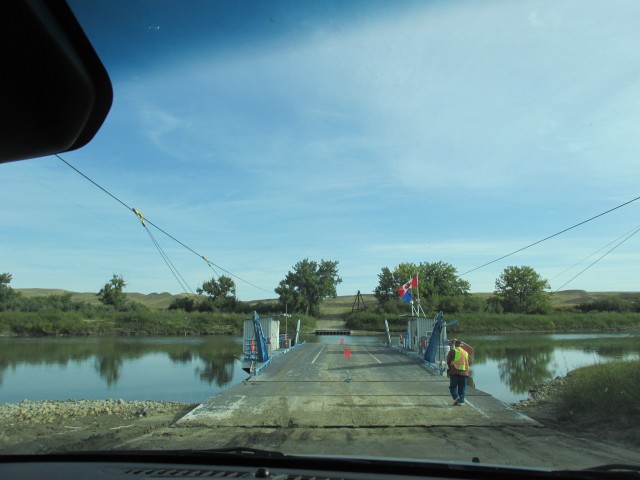
We cross the Finnegan Ferry, one of only a handful left in the province.
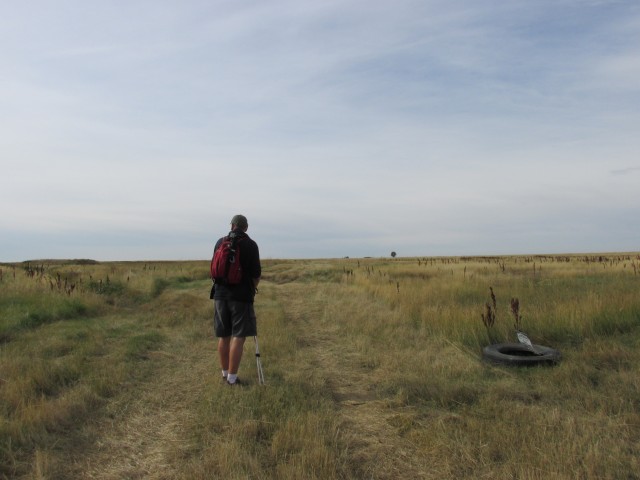
Unable to drive further we head out across the featureless prairie.
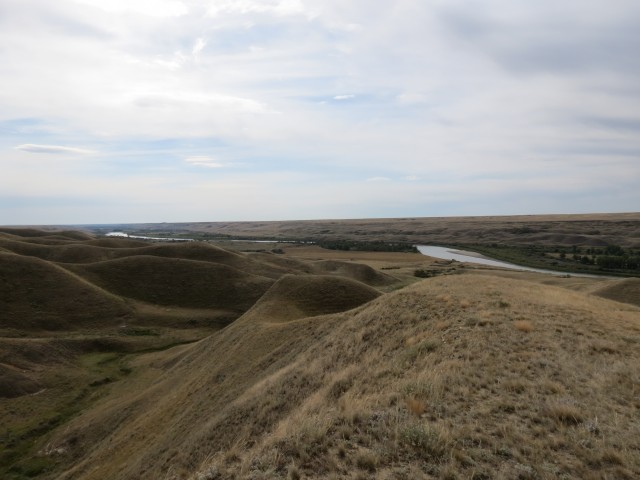
Looking east up the Red Deer River valley. The Bullpound Bridge is hidden behind some trees far below.
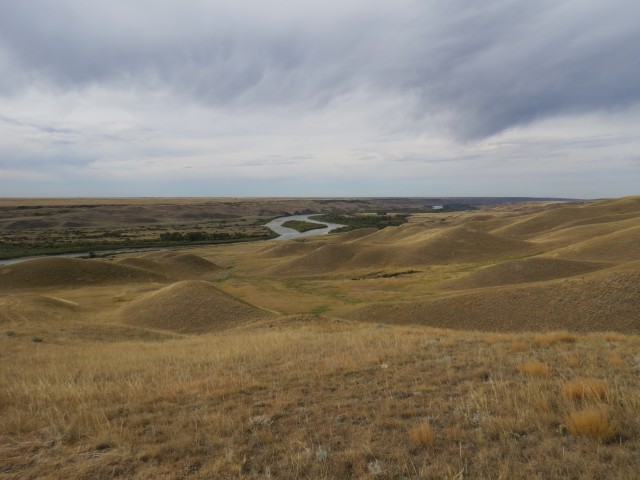
The view west.
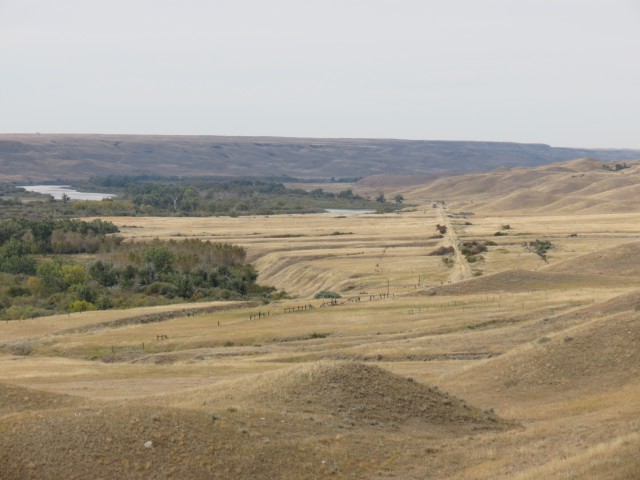
The old CPR line can be seen to the right of centre.
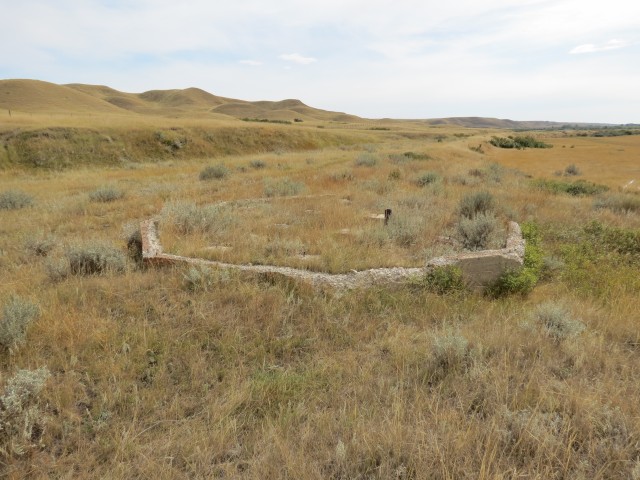
An old water tower foundation – steam engines would stop here to top up their supply.
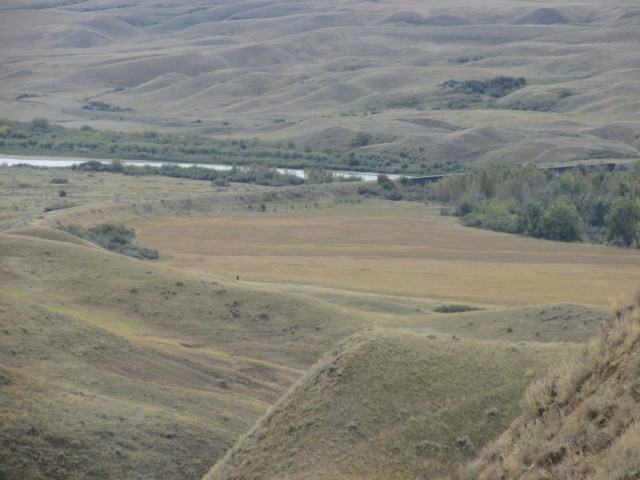
Connie decided to stay behind on the valley rim. I can be seen walking the rail line below – if you look hard.
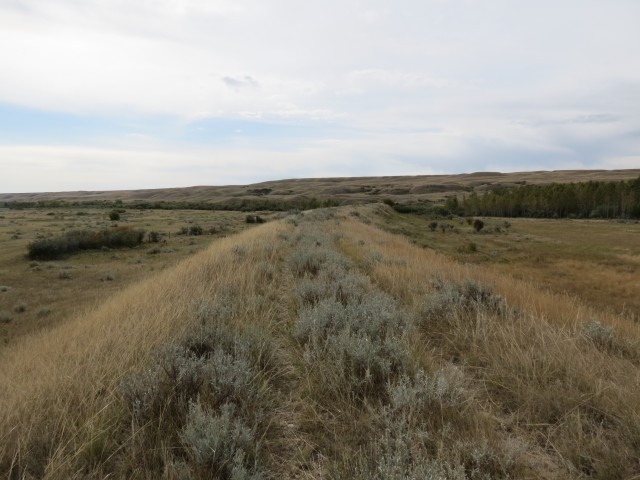
A long sweeping embankment leads to the river.
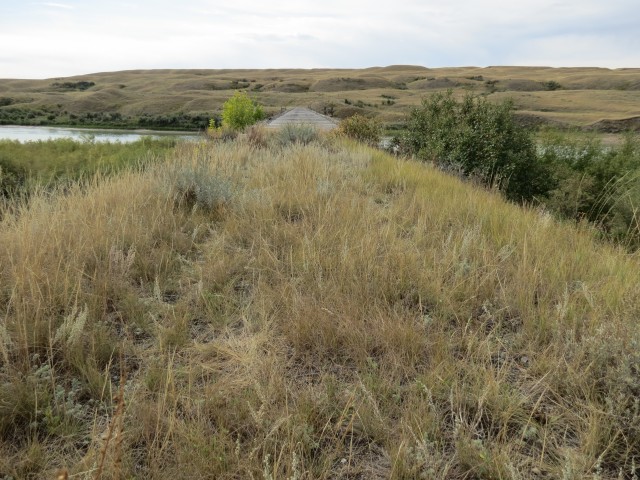
The Bullpound Bridge comes into view.
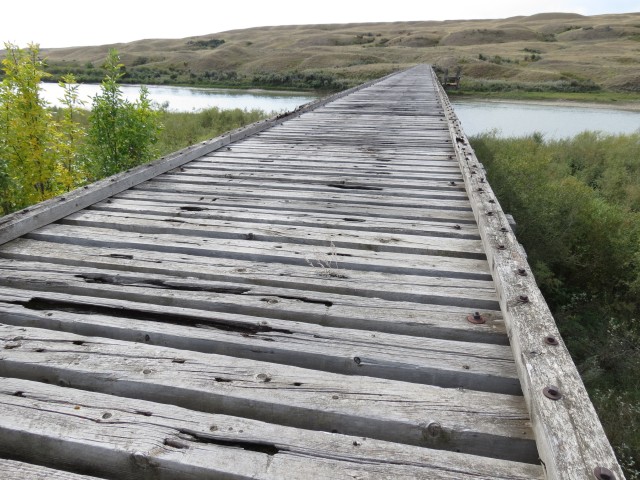
In spite of being abandoned for thirty five plus years, it appears in reasonable shape.
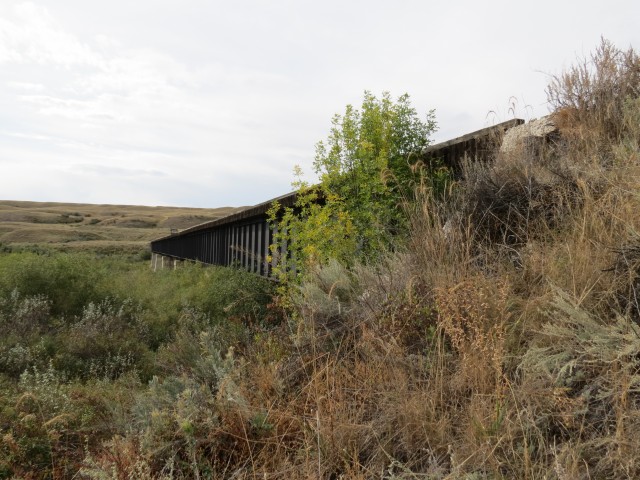
Heavy brush made photographing it a challenge.
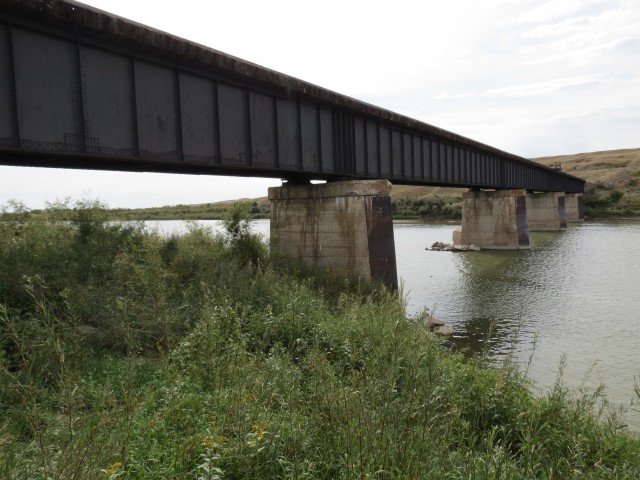
This is a deck-plate or deck-plate girder bridge, a common style used by railways.
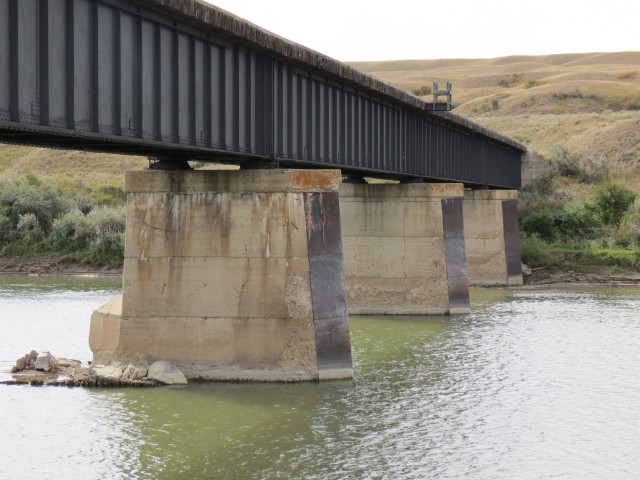
Spring 2013 floods damaged countless bridges in Alberta, but this one seems unaffected.
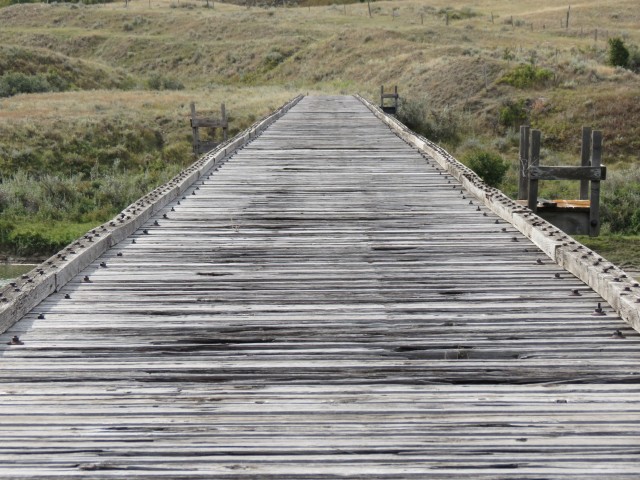
In the days of steam, those platforms would hold water barrels (read the article to find out why).
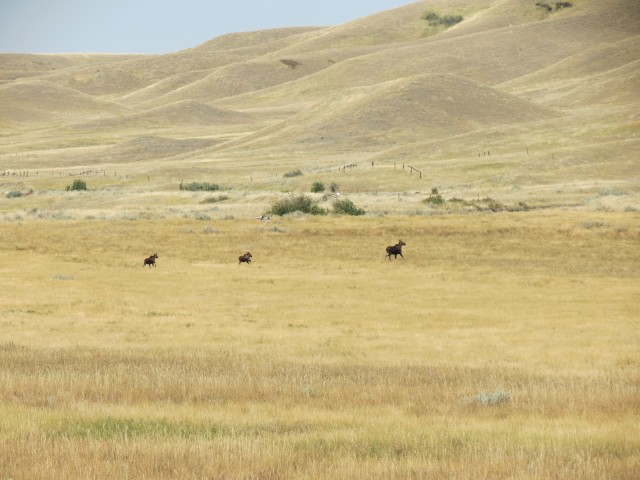
I scare a Moose with calves.
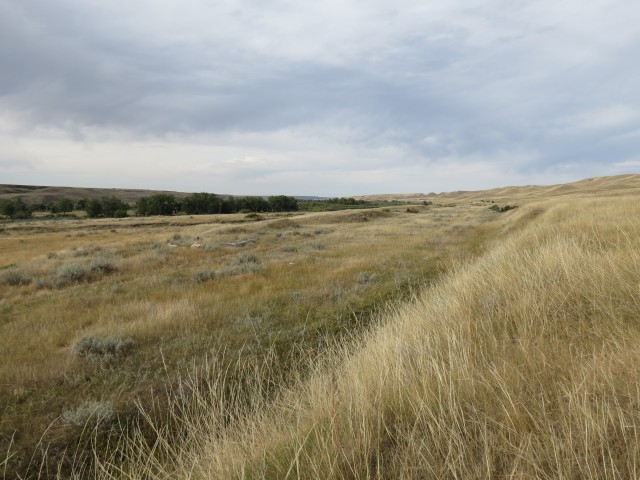
There were some sidings located in this flat area. The main track was to the left, passing in front of the water tower foundation (seen left of centre).
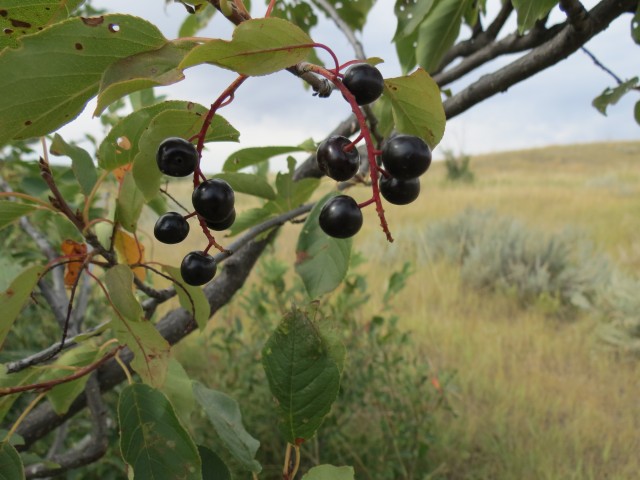
There were lots of these Choke Cherry bushes in the area.
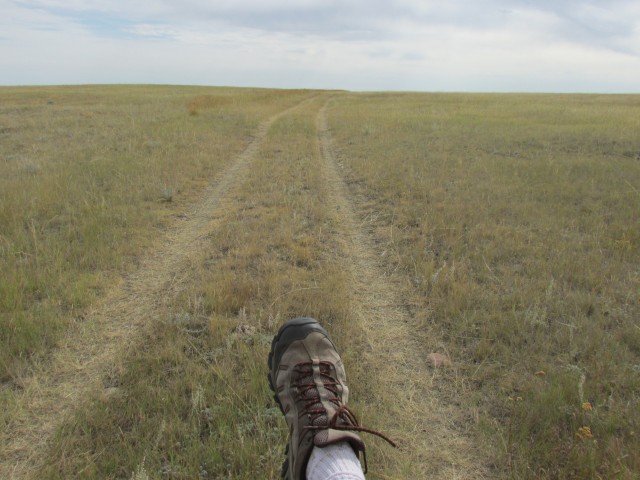
We catch a ride from some passing hunters.

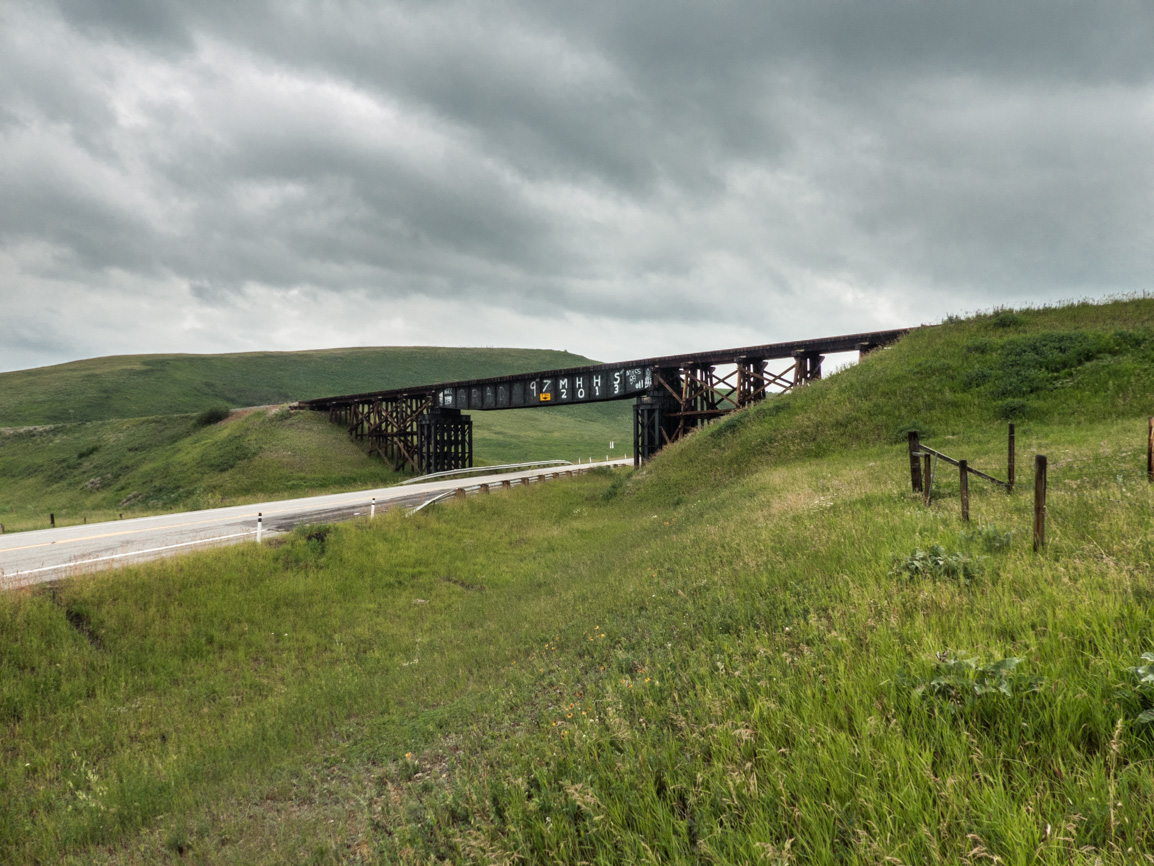
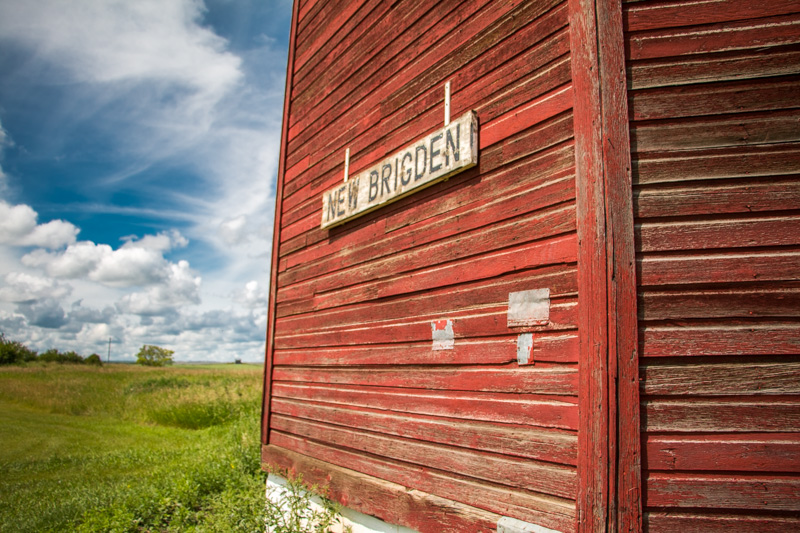
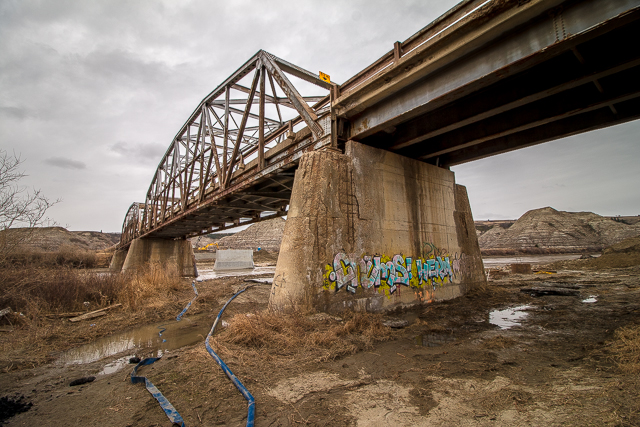
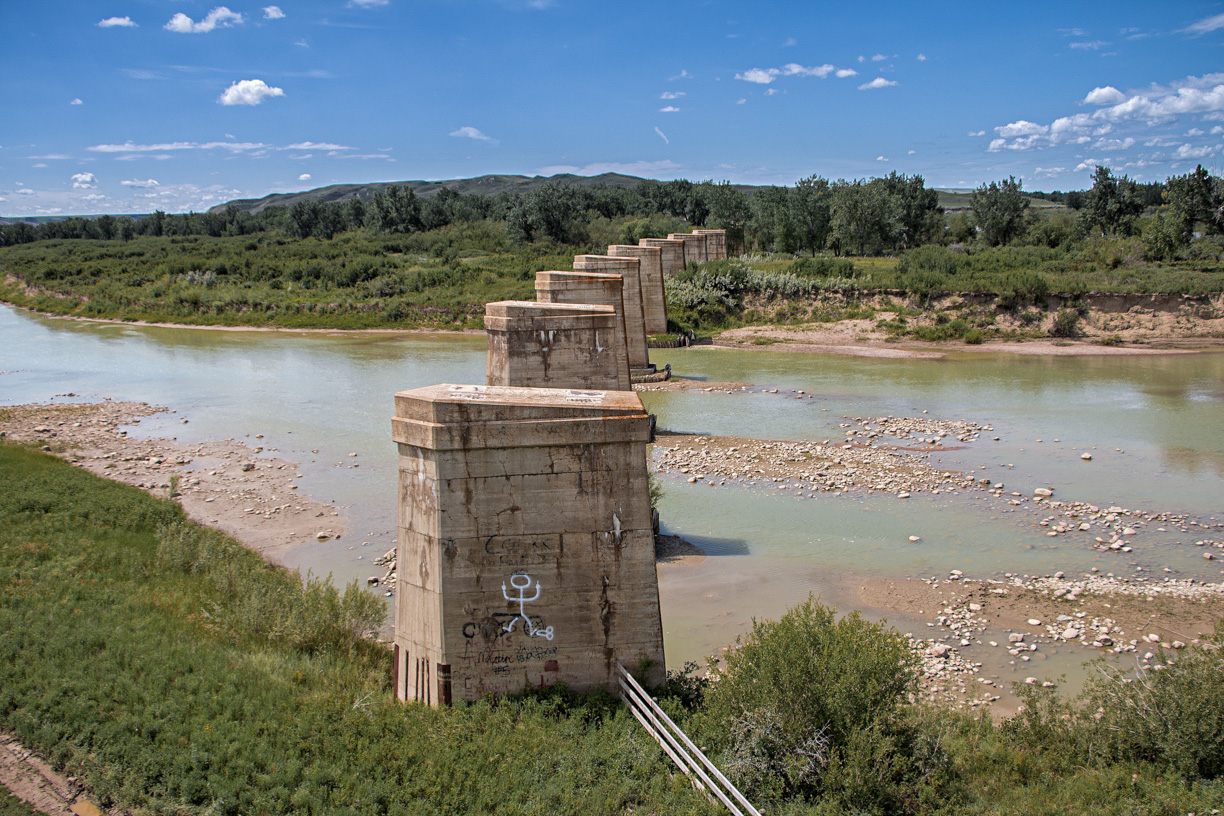
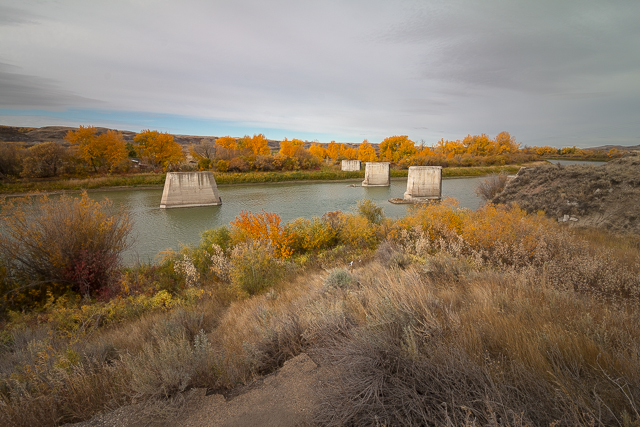
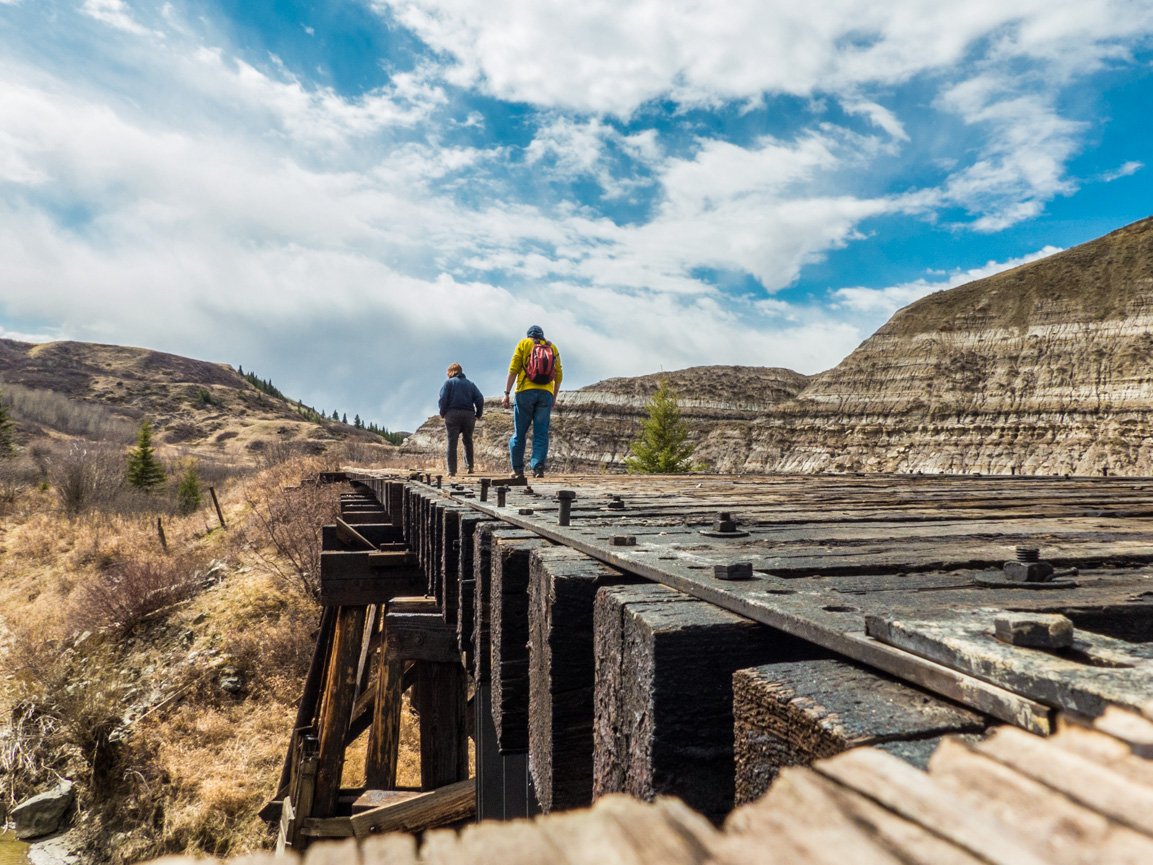
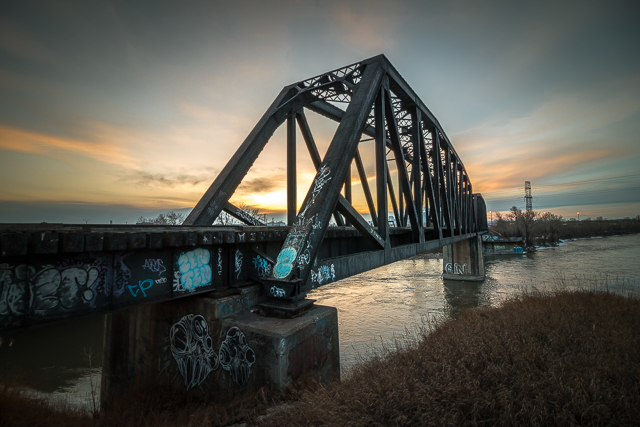
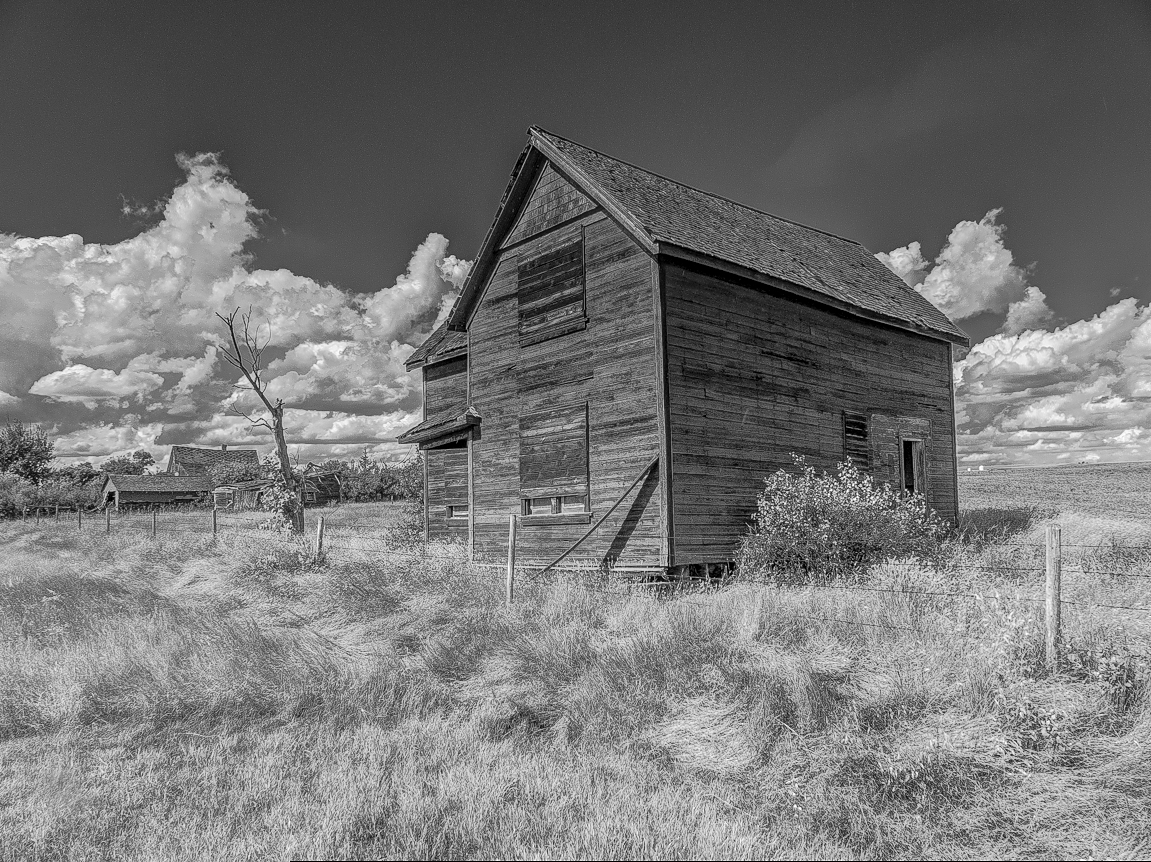
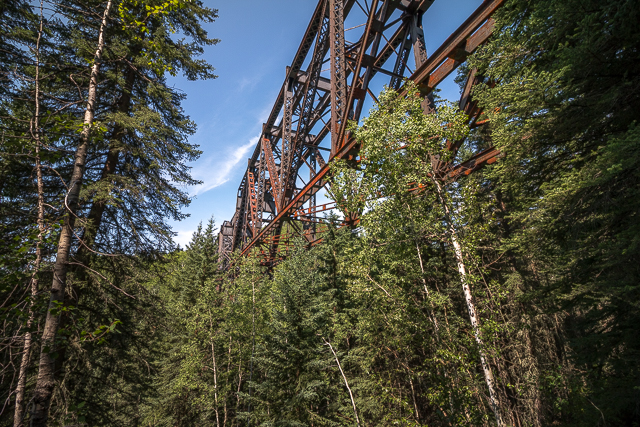
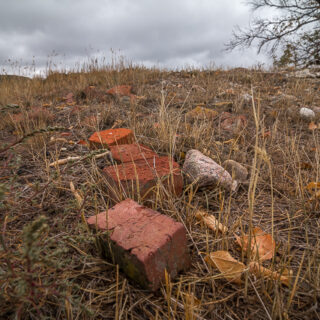
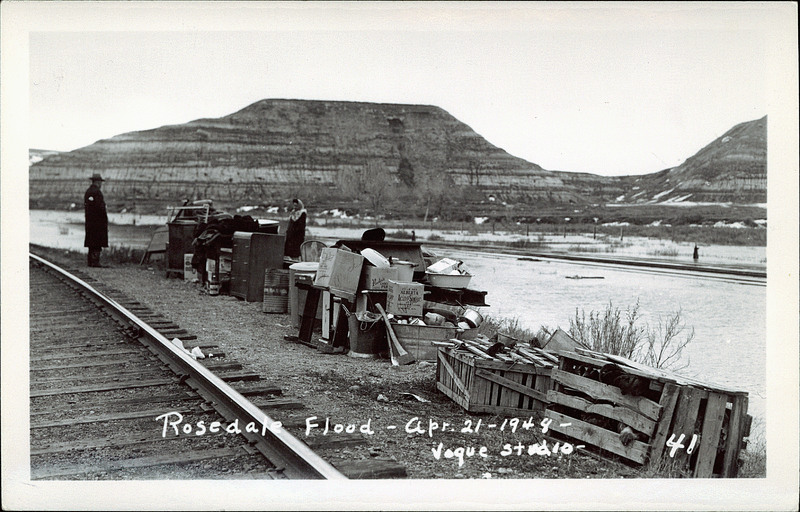
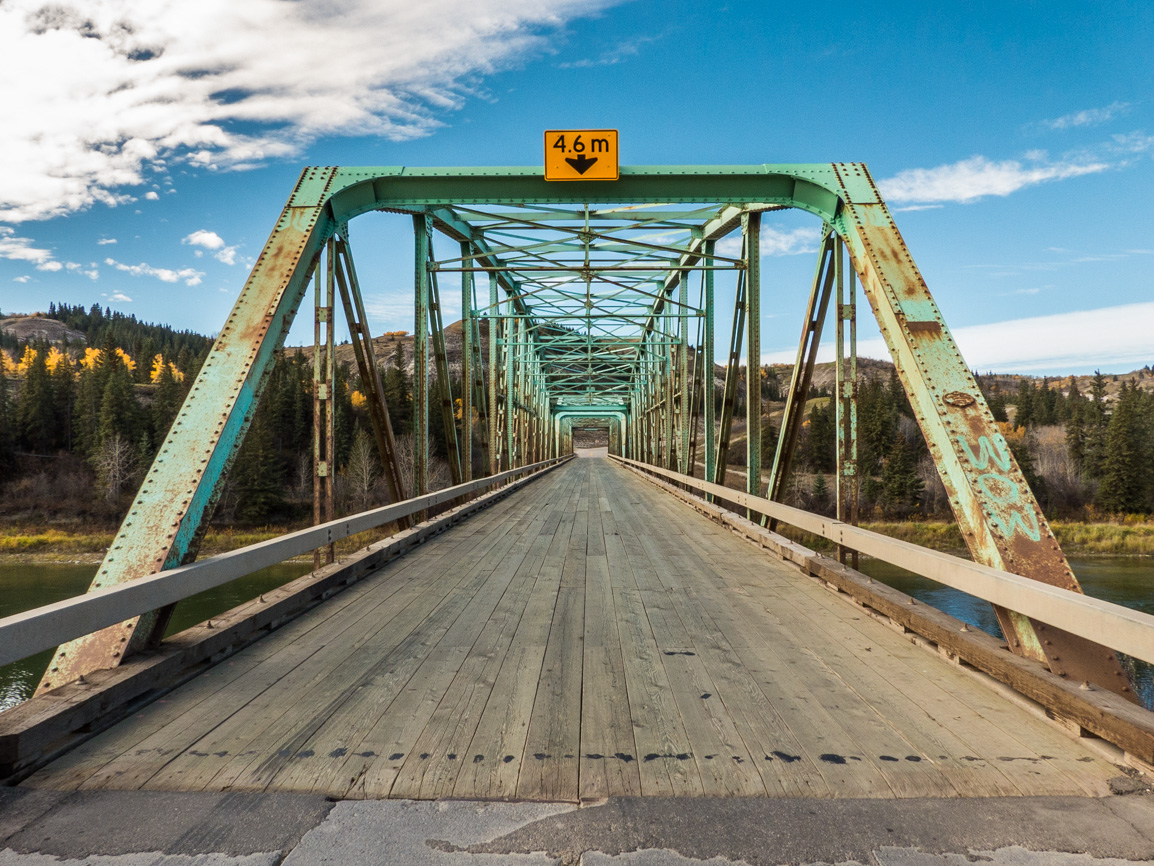
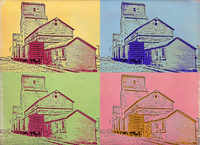






Hello fellows,
Nice reading this history, My name is Rick short for Richard,
I was born in New Denver B.C. in 1938, My Father started working on the paddel wheel Boats on the lakes for the CPR ie the Rosebarrie ,SS Sicamouse the Minto. and others. He was only sixteen when he started, when he passed away in 1968 he could still Chin himself with one arm, He ended up being a Stem engineer on the boats.
Well to get on with my story I lived in the station house in Slocan City as a young fellow,Three years old, Some where I have a photo of this, plus one of my dad and he was holding me in a life ring on the Rosebarry, My Dad told a story about a Box car with oar in it that came from Sandon, The box car rolled off the barge out on the lake somewhere.
Maybe some one on here can confirm that?
I have seen the old water holding tanks around the Kettle Valley, as I grew up in Penticton, I plowed snow in the Cocahalla with a D-6 Cat for interior Contracting, they worked for the railway, Another story,
Yours Truly
Rick
Interesting timing, we were in New Denver (and Slocan) about the time your posted this. Going by memory…there’s definitely a locomotive that slipped off a barge still in the lake and so don’t doubt a rail car or two did something similar. Maybe someone else will know or you can contact us in private and we could try digging up something. Thanks for sharing these awesome memories!
Awesome photo’s and article! I am now dying to go on an Alberta abandoned railway and ghost town tour! Thank you for your awesome website! Great job!
Thank you! And come back often. Old rail lines are an underappreciated subject in the field of abandoned things and places. So love when we find something as cool as this bridge. But even a plain old roadbed thrills us. Yes, we’re odd that way.
So sad but neat at same time!
Agreed, the bridge in such a lonely place, waiting for a train that’ll never come, sure adds a air of sadness.
I can remember crossing this bridge many times growing up in the Cessford Finnigan area great pictures awesome memories
Given how out of the way it is, we’ve sure heard from a lot of people who’ve crossed over it (which given its current state, I’d be reluctant to do). Such cool memories!
(via Facebook)
I have seen that (water tower base). I wondered what it was.
I bet a lot of people scratch their head on seeing it. These towers are from so long ago, so it’s not like many know what they are.
(via Facebook)
Thanks, for posting this…my parent’s used to own this land…it was my Dad’s parent’s initially.
I don’t recall the name of the fellow who gave us the okay to visit the land. I bet you know them. Thanks for commenting!
Mmmmm……choke cherries. Well….the jam anyhow.
I have a good friend who is a C P R conductor out of Medicine Hat. In ”96 he introduced me to a Jess Nowicki, who had retired from the C P R some years earlier. He had a basement full of the coolest stuff, uniforms, pins, personal photos, cross bucks, tons of stuff. I spent a small fortune there. (But at this date, I remember Jess, some of his stories, and I still have my purchases….but don’t miss the money.)
He sold me a handmade conductors lantern from the late 1800’s, and told me that it was from one of the first Selkirk’s to cross the Rockies, and was the only one he’d ever seen like it.
When you rang his doorbell, a steam whistle would sound, and the track signals on his roof would change.
R I P Mr. Nowicki.
Sorry to be long winded….believe me….I kept it short!
Keep up the stellar work!
Oh that’s cool. It seem many railway employees are collectors of train memorabilia as well. I know a few. Thanks for commenting and as long as you keep reading and visiting the site, we’ll keep writing new content.
I’ve passed this bridge twice on canoe trips over the years. Love that country!
Awesome, that must have been a heck of a trip!
To hike to this site, is it private land? Or something else? I hardly seen any fences in your photos! Would be neat to check out.
Above the river is all gas wells. At river level I think it’s a grazing lease. To the best of my knowledge it’s all okay to explore (we saw many hunters for example – good thing I didn’t wear my antler hat). We crossed only one fence as I remember. It’s a good walk into the bridge. I’d love to go back.
This is great! I love looking at old ‘once was’ railroad history. Have you ever been up to Empress to scout out where the girder bridge was? It caught fire sometime in the late 80’s or early 90’s and then the bridge was dismantled. The steel spans sat along side the CPR right of way at Pashley (next station east of Dunmore) but they were trucked away 2 years ago, I assume to be cut up for scrap. Unfortunately I did not get any pictures of those.
I know of the bridge near Empress but have not been. I’ve seen photos and it was a monster. I see all the piers are still there and would like to see them first hand. In the 1990s we visited Empress, just before the line was pulled up and near the yard were a number of bridge spans, which I assume were from this structure.
Thanks for that info Chris Mitchell. I was about to comment how it was strange that the bridge at Empress was pulled out while Cecil and Bullpound and Mintlaw are still standing. But a bridge fire would help to explain that it would be a liability to CPR To leave a bridge standing with compromised load carrying ability. Not that the bridges they have standing currently aren’t rapidly becoming a liability to them as more and more people find them like the Howe Truss by Drumheller. I suspect we may see fences halting access in the future 🙁 Chris & Connie thanks for this article!
The East Coulee Bridge has a fence blocking access to it now. Thanks for commenting.
I’ve had a long standing curiosity about this rail bridge (along with the one at Cecil) and was wondering if anybody made any sort of attempt to visit and photograph this bridge. I sometimes try to follow abandoned rail lines using the Google satellite images and found that this bridge (as well as the Cecil bridge) are still standing. Now, thanks to your efforts, I get to see some photos of this bridge. I think I am becoming a fan of your expeditions (I am also a fan of Jonathan Koch’s “Forgotten Alberta” website). I wish that I myself was able to go on discovery expeditions like this.
I follow old rail lines on Google too! We visited Cecil, in case you did not see that.
https://www.bigdoer.com/2242/exploring-history/abandoned-cpr-bow-river-bridge/
Both bridges require a hike to get to and as such, are seldom visited.
We did a collaborative article with Forgottenalberta.com
https://www.bigdoer.com/11271/exploring-history/bow-city-townsite-with-forgottenalberta-com/
BTW, if there is a special place you’d like us to visit, let us know.
Hello Chris:
Thanks for doing the legwork and to actually get to visualize this railway bridge that my mentor CPR conductor Jim McKinnon described to me, he just turned 90 On September 7 and he hired on as a CPR trainmen in 1945 out of Medicine Hat and retired in 1983 he worked many trips on the Rosemary Subdivision during his career, when I see him at our next CPR pensioners luncheon I will show him your photos.
Larry
It’s my pleasure to share our adventures with you Larry. I’d love to hear what Jim has to say about the pictures, or Bullpound in gerneral. Please let us know.
Wow, it never occurred to me that there would be Moose in that part of Alberta. Very cool.
It surprised me too. Those hunters we bumped into mentioned Moose were actually fairly common in the area. Odd, I thought this region was the exclusive domain of the Antelope and Coyote.
I have never been down there !!!
It’s a bit of work to get to, but if you can make, it’s worth it. It’s so seldom visited, a forgotten piece of railway history.